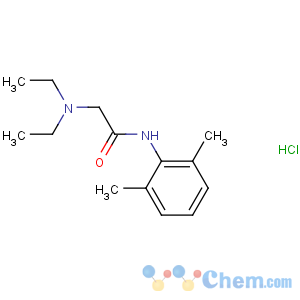You are here:
HomeProductsLegal Local Anaesthetics Api Lidocaine HCl Lidocaine Hydrochloride Powder
Legal Local Anaesthetics Api Lidocaine HCl Lidocaine Hydrochloride Powder
-
- Product NameLegal Local Anaesthetics Api Lidocaine HCl Lidocaine Hydrochloride Powder
- CAS No.73-78-9
- Purity99%
- Min QuantityKilograms
- Price1~

 View Contact Detail
View Contact Detail
-

Molecular Structure
Detailed Description
Legal Local Anaesthetics Api Lidocaine HCl Lidocaine Hydrochloride Powder
Quick Detail:
Product name:Lidocaine HCl
Other name:Lidocaine hydrochloride
CAS register number:73-78-9
EINECS:200-803-8
Molecular formula:C14H23ClN2O
Molecular weight:270.8
Pure 73-78-9
Topical Anesthetic Anodyne Lidocaine HCl / Lidocaine Hydrochloride Powder
Melting point:80-82°C
Assay:99%
Usage:Lidocaine Usage: Lidocaine is a common local anesthetic and antiarrhythmic drug, lidocaine is used topically to relieve itching, burning and pain from skin inflammations injected as a dental anesthetic or as a local anesthetic for minor surgery. Lidocaine was first synthesized under the name Xylocaine. Lidocaine was first marketed in 1949. Lidocaine may be prepared in two steps by the reaction. Lidocaine is approximately 95% metabolized (dealkylated) in the liver.
Description:
The efficacy profile of lidocaine as a local anesthetic is characterized by a rapid onset of action and intermediate duration of efficacy. Therefore, lidocaine is suitable for infiltration, block and surface anesthesia. Longer-acting substances such as bupivacaine are sometimes given preference for subdural and epidural anesthesias; lidocaine, on the other hand, has the advantage of a rapid onset of action. Epinephrine (aka adrenaline) vasoconstricts arteries reducing bleeding and also delays the resorption of lidocaine, almost doubling the duration of anaesthesia. For surface anesthesia several formulations are available that can be used e.g. for endoscopies, before intubations etc. Buffering the pH of lidocaine makes local freezing less painful. Lidocaine drops can be used on the eyes for short ophthalmic procedures.
Topical lidocaine has been shown in some patients to relieve the pain of postherpetic neuralgia (a complication of shingles), though there is not enough study evidence to recommend it as a first-line treatment. IV lidocaine also has uses as a temporary fix for tinnitus. Although not completely curing the disorder, it has been shown to reduce the effects by around two thirds.
Lidocaine hydrochloride injection administered intravenously or intramuscularly, is specifically indicated in the acute management of ventricular arrhythmias such as those occurring in relation to acute myocardial infarction, or during cardiac manipulation, such as cardiac surgery.
Applications:
Main functions are as follows:
1. Local anesthetic.
2. Mainly used in mucosa anesthetic. The function is stronger than
Procaine and Lidocaine.

- Legal Local Anaesthetics Api Lidocaine HCl Lidocaine Hydrochloride Powder




